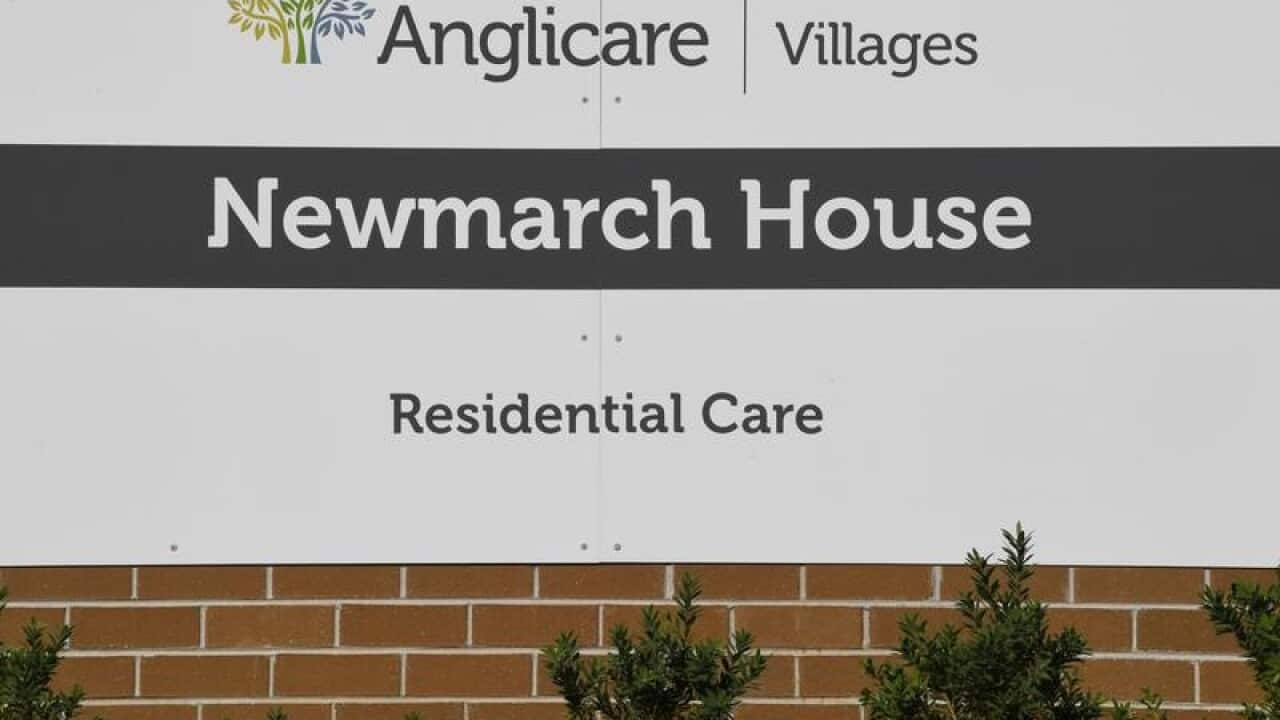The number of occupied aged care beds is likely to drop by two to three per cent this financial year, the biggest one year drop in recent memory.
The fall comes as elderly Australians leave their residence or delay moving to a facility due to the coronavirus pandemic.
The declining rates of occupancy has raised concerns for the sector’s ability to bounce back after the COVID-19 crisis, .
Peak bodies representing aged care providers have reported some residents being removed from care due to concerns over the crisis, but say the full picture of the economic impact is yet to be seen.
A national aged care performance report for the March quarter is set to be released this week, with a senior analyst warning of a 1-1.25 per cent drop in occupancy in the first three months of the year.
The March findings, an industry benchmark prepared by Stewart Brown, follow an earlier one per cent drop in the final quarter of last year to 93.9 per cent, the lowest level in five years.
Grant Corderoy, a senior partner at Stewart Brown, told SBS News he expected a further one per cent drop in the April- June quarter, which will encompass the worst of the COVID-19 crisis in Australia.
“In the 2019-20 financial year, there is likely to be a two to three per cent decline. That’s the biggest single decline in any year that we can recall,” he said. “There’s never been a decline, to my knowledge, of more than one per cent in any year.”
According to the December Stewart Brown report, 56 per cent of aged care homes surveyed were already operating at a loss, a figure that Mr Corderoy believes could jump to 60 per cent nationally due to the expected drop in occupancy.
A Department of Health spokesperson, which keeps its own data on occupancy levels, said the “modest reduction” was in line with an ongoing gradual decline and not necessarily a result of COVID-19.
They said they would “monitor occupancy rates as the pandemic continues”. Due to differences in the way the department’s data is calculated compared to Stewart Brown, the government reported an occupancy rate of 88.6 per cent for the January to March period.
“The government acknowledges the concerns of people considering entering residential aged care at this time … [but] we would encourage people to continue to seek the supports they need,” they said.
As of late last week, 67 cases of COVID-19, and more than a quarter of the national coronavirus death toll, have been linked to residential aged care facilities. A total of 7,150 cases have been confirmed in Australia.
Patricia Sparrow, the chief executive of Aged and Community Services Australia (ACSA), the national peak body for not-for-profit aged care providers, told SBS News that some members had reported families removing loved ones from residential aged care due to COVID-19.
She said it was too early to tell what effect that has had on residential aged care occupancy levels.
“If there’s not someone in the bed, the government doesn’t fund it, which makes sense but ultimately for providers that can be difficult because we’re financially challenged at the moment,” she said.
Financial pressures have also been exacerbated by additional costs related to COVID-19, she said, including supplying personal protective equipment (PPE), a heightened level of infection control, and resources associated with screening visitors.
“Government has provided some funding to offset those costs, but not as much as we think we actually need,” she said. Concerns over bed occupancy were echoed by the head of the Aged Care Industry Association, a national body open to all providers of aged care services.
Concerns over bed occupancy were echoed by the head of the Aged Care Industry Association, a national body open to all providers of aged care services.

Minister for Aged Care Richard Colbeck. Source: AAP
Chief executive Luke Westerberg pointed specifically to restrictions in South Australia which prevented people touring aged care facilities prior to moving in during the height of the crisis.
“I think that has led to a bit of a reduction in people’s willingness to enter facilities if they can’t look at it first,” he told SBS News.
“That wasn’t an issue in other states, but certainly there has been a bit of an impact on occupancy related to COVID-19 … a further drop in occupancy is obviously going to put further pressure on the sector as a whole.”
Earlier this month, Aged Care Minister Richard Colbeck announced an additional $205 million package targeted at ensuring residential aged care providers can protect their residents during COVID-19.
The payment, which will be available to all Commonwealth supported residential aged care providers, would deliver $900 per resident in metropolitan areas and approximately $1,350 per resident in regional Australia to be paid by early June.
Legislation was also passed in May allowing aged care residents to take .
Ian Yates, the chief executive of advocacy body Council of the Aging Australia, urged providers to communicate with families or prospective residents about any anxieties they have about entering, or remaining in, aged care at this time.
“Engage with families, communicate with families, listen to families, answer families. A whole lot of the anxieties can be dealt with if you do that,” he said.
People in Australia must stay at least 1.5 metres away from others. Check your state’s restrictions on gathering limits.
Testing for coronavirus is now widely available across Australia. If you are experiencing cold or flu symptoms, arrange a test by calling your doctor or contact the Coronavirus Health Information Hotline on 1800 020 080.
The federal government's coronavirus tracing app COVIDSafe is available for download from your phone's app store.
SBS is committed to informing Australia’s diverse communities about the latest COVID-19 developments. News and information is available in 63 languages at .











